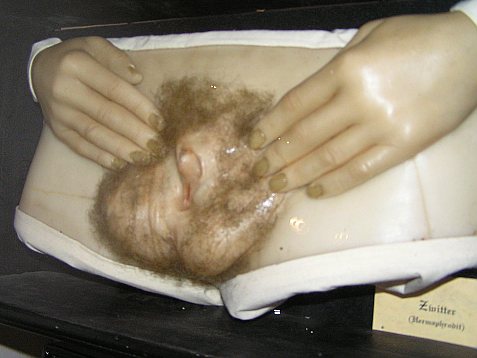|
Testicular Dysgenesis Syndrome
Testicular dysgenesis syndrome (TDS) is a hypothesized male reproduction-related condition characterized by the presence of symptoms and disorders such as hypospadias, cryptorchidism, poor semen quality, and testicular cancer. The concept was first introduced by N.E. Skakkebæk along with the department of Growth and Reproduction at Copenhagen University in a paper in ''Human Reproduction''. The paper suggests the origin and underlying cause of TDS can be detected as early as in fetal life, where environmental and genomic factors could affect the development of the male reproductive system. Causes Central to the cause of irreversible TDS are disruptions to early fetal testes development. This has genetic, environmental, and lifestyle components, however the rapid increase in the incidence of the disorders associated with TDS in the last decades indicates that it is under a powerful environmental influence. The fetal origins of TDS are reinforced by the high incidence of TDS diso ... [...More Info...] [...Related Items...] OR: [Wikipedia] [Google] [Baidu] |
Hypospadias
Hypospadias is a common malformation in fetal development of the penis in which the urethra does not open from its usual location on the head of the penis. It is the second-most common birth defect of the male reproductive system, affecting about one of every 250 males at birth, although when including milder cases, is found in up to 4% of newborn males. Roughly 90% of cases are the less serious distal hypospadias, in which the urethral opening (the Urinary meatus, meatus) is on or near the head of the penis (Glans penis, glans). The remainder have proximal hypospadias, in which the meatus is all the way back on the shaft of the penis, near or within the scrotum. Shiny tissue or anything that typically forms the urethra instead extends from the meatus to the tip of the glans; this tissue is called the urethral plate. In most cases, the foreskin is less developed and does not wrap completely around the penis, leaving the underside of the glans uncovered. Also, a downward bending of ... [...More Info...] [...Related Items...] OR: [Wikipedia] [Google] [Baidu] |
Epigenetics
In biology, epigenetics is the study of changes in gene expression that happen without changes to the DNA sequence. The Greek prefix ''epi-'' (ἐπι- "over, outside of, around") in ''epigenetics'' implies features that are "on top of" or "in addition to" the traditional (DNA sequence based) genetic mechanism of inheritance. Epigenetics usually involves a change that is not erased by cell division, and affects the regulation of gene expression. Such effects on cellular and physiological traits may result from environmental factors, or be part of normal development. The term also refers to the mechanism of changes: functionally relevant alterations to the genome that do not involve mutation of the nucleotide sequence. Examples of mechanisms that produce such changes are DNA methylation and histone modification, each of which alters how genes are expressed without altering the underlying DNA sequence. Further, non-coding RNA sequences have been shown to play a key role in the r ... [...More Info...] [...Related Items...] OR: [Wikipedia] [Google] [Baidu] |
Semen Analysis
A semen analysis (plural: semen analyses), also called seminogram or spermiogram, evaluates certain characteristics of a male's semen and the spermatozoon, sperm contained therein. It is done to help evaluate male fertility, whether for those seeking pregnancy or verifying the success of vasectomy. Depending on the measurement method, just a few characteristics may be evaluated (such as with a home kit) or many characteristics may be evaluated (generally by a diagnostic laboratory). Collection techniques and precise measurement method may influence results. The assay is also referred to as ejaculate analysis, human sperm assay (HSA), sperm function test, and sperm assay. Semen analysis is a complex test that should be performed in andrology laboratories by experienced technicians with quality control and validation of test systems. A routine semen analysis should include: physical characteristics of semen (color, odor, pH, viscosity and liquefaction), volume, concentration, morp ... [...More Info...] [...Related Items...] OR: [Wikipedia] [Google] [Baidu] |
Semen Quality
Semen quality is a measure of male fertility, a measure of the ability of sperm in semen to accomplish fertilization. Semen quality involves both sperm quantity and quality. Semen quality is a major factor in fertility. Cryptorchidism, hypospadias, testicular cancer and poor semen quality make up the syndrome known as testicular dysgenesis syndrome. Factors Many factors influence sperm quality. Exposure to any of the temporary factors can cause up to a three-month delay before sperm quality returns to normal, due to spermiogenesis. General decline A 2017 review and meta-analysis found sperm counts among Western men (i.e. men in Australia, Europe, New Zealand, and North America) declined 50–60% between 1973 and 2011, with an average decline of 1.4% per year. The meta-analysis found no indication the decline is leveling off. The decline among North American and Australian/European men is similar. The decline in sperm count among men in South America, Asia, and Africa is less t ... [...More Info...] [...Related Items...] OR: [Wikipedia] [Google] [Baidu] |
Sperm Stained
Sperm (: sperm or sperms) is the male reproductive Cell (biology), cell, or gamete, in anisogamous forms of sexual reproduction (forms in which there is a larger, female reproductive cell and a smaller, male one). Animals produce motile sperm with a tail known as a flagellum, which are known as spermatozoa, while some red algae and fungi produce non-motile sperm cells, known as spermatia. Flowering plants contain non-motile sperm inside pollen, while some more basal plants like ferns and some gymnosperms have motile sperm. Sperm cells form during the process known as spermatogenesis, which in amniotes (reptiles and mammals) takes place in the seminiferous tubules of the testicles. This process involves the production of several successive sperm cell precursors, starting with spermatogonia, which Cellular differentiation, differentiate into spermatocytes. The spermatocytes then undergo meiosis, reducing their Ploidy, chromosome number by half, which produces spermatids. The sper ... [...More Info...] [...Related Items...] OR: [Wikipedia] [Google] [Baidu] |
TDS Schemetic Diagram
TDS may refer to: Business and finance * Tax Deducted at Source, in India * Tenancy Deposit Scheme (England and Wales) * Telephone and Data Systems, a US company ** TDS Telecom, a subsidiary * Thompson Dorfman Sweatman, a law firm, Winnipeg, Canada Technology * Tabular Data Stream, a computer protocol * TeX Directory Structure, for TeX system files * Transposition driven scheduling, in parallel computer systems * Time-driven switching, in data communications * Technical data sheet in CDMA technology * An oscilloscope series by Tektronix Military * Tonga Defence Services * United States Army Trial Defense Service Science * ''Ter die sumendum'', a medical abbreviation for 3 times daily * Thermal desorption spectroscopy, to observe molecules desorbed from a surface * Tornado debris signature on weather radar * Total dissolved solids in water * Transderivational search or fuzzy search in psychology * Testosterone Deficiency Syndrome Other uses * ''The Daily Show'', US TV ... [...More Info...] [...Related Items...] OR: [Wikipedia] [Google] [Baidu] |
Leydig Cell
Leydig cells, also known as interstitial cells of the testes and interstitial cells of Leydig, are found adjacent to the seminiferous tubules in the testicle and produce testosterone in the presence of luteinizing hormone (LH). They are polyhedral in shape and have a large, prominent nucleus, an eosinophilic cytoplasm, and numerous lipid-filled vesicles. Males have two types of leydig cells that appear in two distinct stages of development: the fetal type and the adult type. Structure The mammalian Leydig cell is a polyhedral epithelioid cell with a single eccentrically located ovoid nucleus. The nucleus contains one to three prominent nucleoli and large amounts of dark-staining peripheral heterochromatin. The acidophilic cytoplasm usually contains numerous membrane-bound lipid droplets and large amounts of smooth endoplasmic reticulum (SER). Besides the abundance of SER with scattered patches of rough endoplasmic reticulum, several mitochondria are also prominent within the cy ... [...More Info...] [...Related Items...] OR: [Wikipedia] [Google] [Baidu] |
Cryptorchidism
Cryptorchidism, also known as undescended testis, is the failure of one or both testes to descend into the scrotum. The word is . It is the most common birth defect of the male genital tract. About 3% of full-term and 30% of premature infant boys are born with at least one undescended testis. However, about 80% of cryptorchid testes descend by the first year of life (the majority within three months), making the true incidence of cryptorchidism around 1% overall. Cryptorchidism may develop after infancy, sometimes as late as young adulthood, but that is exceptional. Cryptorchidism is distinct from monorchism, the condition of having only one testicle. Though the condition may occur on one or both sides, it more commonly affects the right testis. A testis absent from the normal scrotal position may be: # Anywhere along the "path of descent" from high in the posterior (retroperitoneal) abdomen, just below the kidney, to the inguinal ring # In the inguinal canal # Ectopic, havin ... [...More Info...] [...Related Items...] OR: [Wikipedia] [Google] [Baidu] |
Sertoli Cell
Sertoli cells are a type of sustentacular "nurse" cell found in human testes which contribute to the process of spermatogenesis (the production of sperm) as a structural component of the seminiferous tubules. They are activated by follicle-stimulating hormone (FSH) secreted by the adenohypophysis and express FSH receptor on their membranes. History Sertoli cells are named after Enrico Sertoli, an Italian physiologist who discovered them while studying medicine at the University of Pavia, Italy. He published a description of his eponymous cell in 1865. The cell was discovered by Sertoli with a Belthle microscope which had been purchased in 1862. In the 1865 publication, his first description used the terms "tree-like cell" or "stringy cell"; most importantly, he referred to these as "mother cells". Other scientists later used Enrico's family name to label these cells in publications, beginning in 1888. As of 2006, two textbooks that are devoted specifically to the Sertoli cell ... [...More Info...] [...Related Items...] OR: [Wikipedia] [Google] [Baidu] |
Diethylstilbestrol
Diethylstilbestrol (DES), also known as stilbestrol or stilboestrol, is a nonsteroidal estrogen medication, which is presently rarely used. In the past, it was widely used for a variety of indications, including pregnancy support for those with a history of recurrent miscarriage, hormone therapy for menopausal symptoms and estrogen deficiency, treatment of prostate cancer and breast cancer, and other uses. By 2007, it was only used in the treatment of prostate cancer and breast cancer. In 2011, Hoover and colleagues reported adverse reproductive health outcomes linked to DES including infertility, miscarriage, ectopic pregnancy, preeclampsia, preterm birth, stillbirth, infant death, menopause prior to age 45, breast cancer, cervical cancer, and vaginal cancer. While most commonly taken by mouth, DES was available for use by other routes as well, for instance, vaginal, topical, and by injection. DES is an estrogen, or an agonist of the estrogen receptors, the biologic ... [...More Info...] [...Related Items...] OR: [Wikipedia] [Google] [Baidu] |





